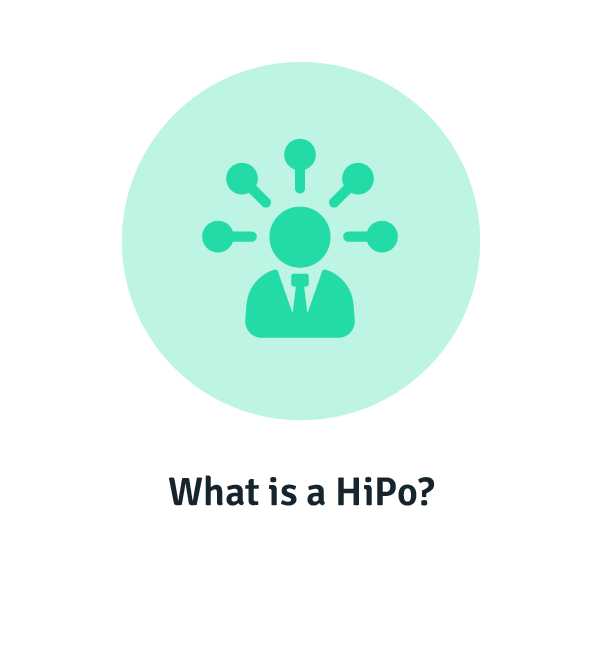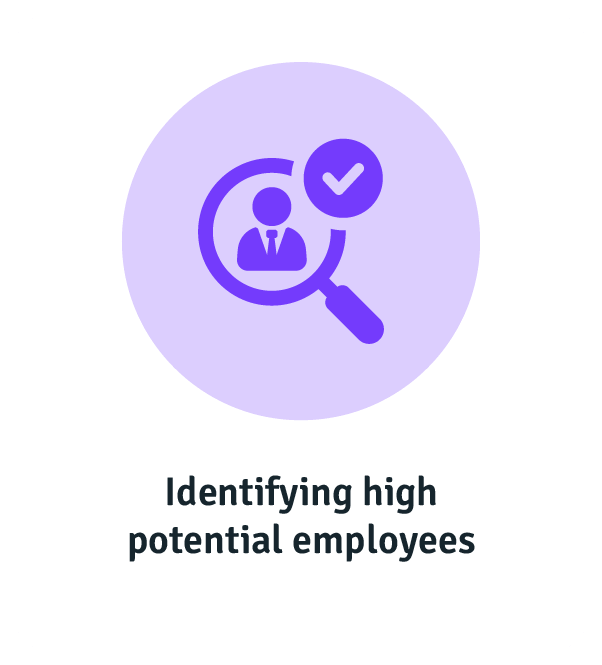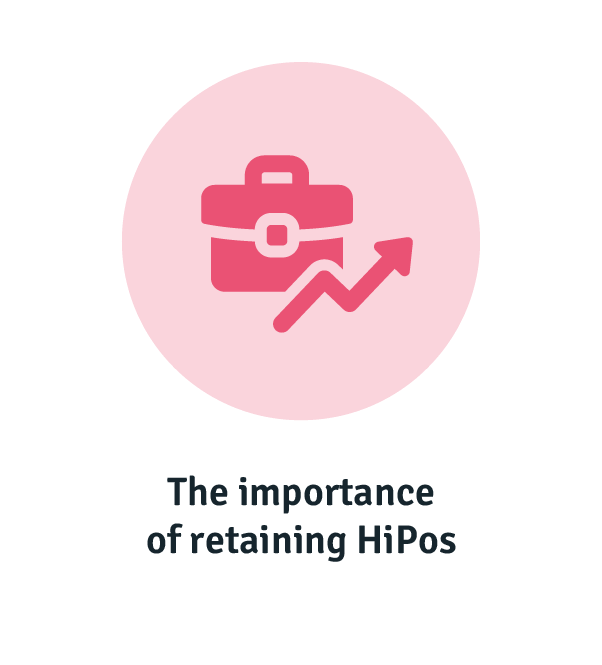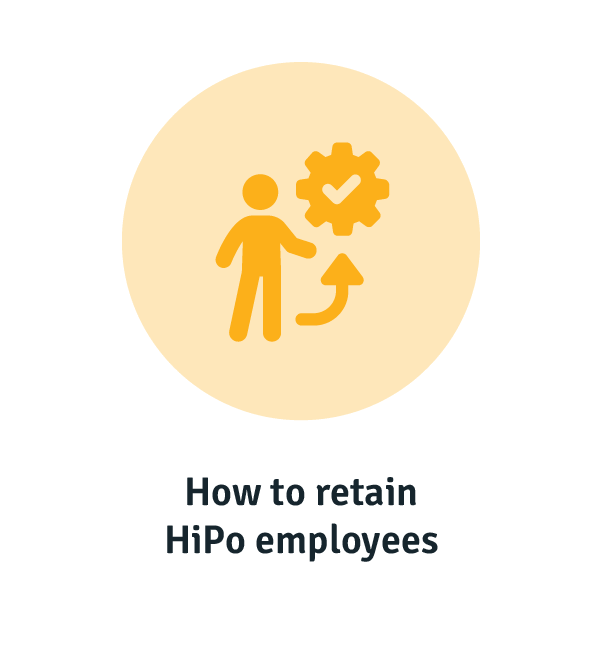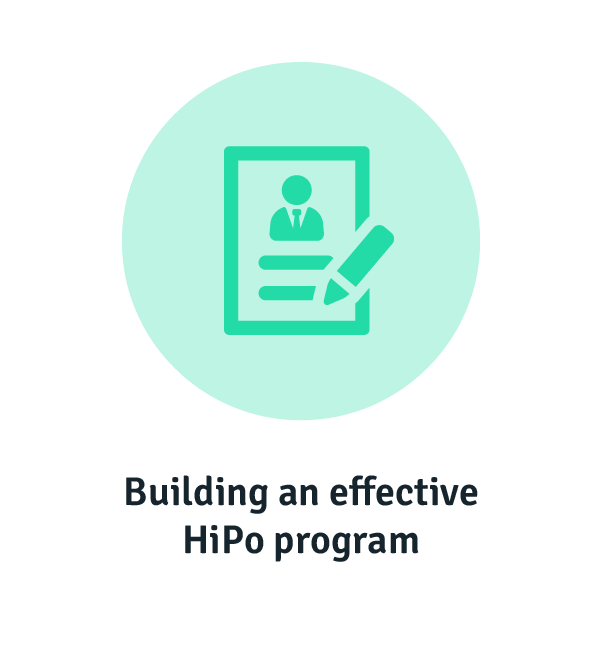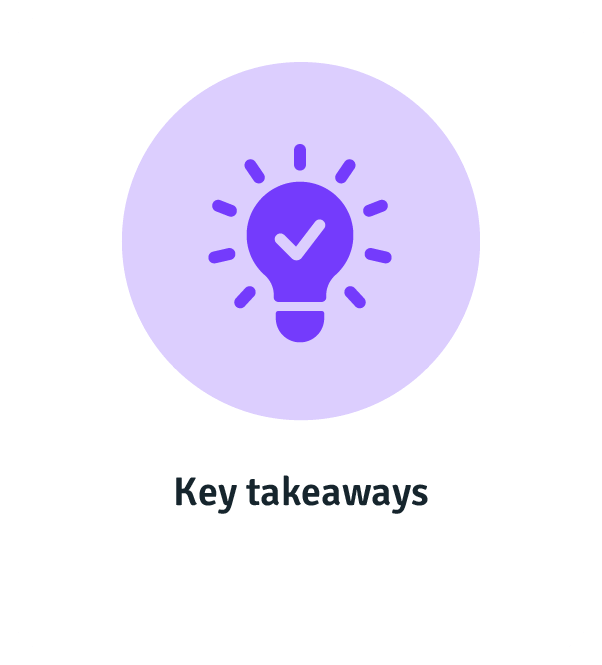The Importance of Retaining the High-Potential Employee (aka the HiPo)
Every organisation has its rising stars. In talent terms, they’re known as high potential employees or HiPos (pronounced high – po, before anyone gets the wrong end of the stick).
A unique combination of capability, commitment and drive is what sets them apart from their peers. And HiPos must have all three of these factors, which is why talent managers and HR leaders need a solid plan of action for finding and retaining high potential individuals.
It’s not just about upskilling. There needs to be attractive development opportunities embedded in the company culture. Let’s dive in.
What is a high-potential employee (HiPo)?
A high-potential employee (HiPo) is an individual with the drive, desire and ability to succeed in strategic and senior roles. A HiPo usually develops new capabilities, exceeds expectations and delivers results faster than their peers. For this reason, HiPos are generally developed to be the future leaders of an organisation.
How to identify high potential employees
It’s not just je ne sais quoi. What sets a HiPo apart is in the word HiPo itself: The promise they hold for the future.
But how does one narrow down the criteria for a HiPo from just “potential”? There’ll be an element of past and current performance that indicates their future potential. Harvard Business Review (HBR) research shows that high potentials aren’t just high achievers. Top talent tend to outperform their peers through values-driven behaviour, a catalytic capacity to grow, and drive to succeed not just for themselves, but alongside others.
The characteristics that make a HiPo
Aside from achieving strong results, there are a few capabilities that make a HiPo stand out. The following isn’t an exhaustive list, so we recommend that you think about what your organisation considers to be indicators of a capacity to succeed.
- Growth mindset. The ability to take constructive criticism on board (and not personally), as well as a personal drive to learn and grow.
- Adaptive expertise. HiPos know when a project calls for technical, strategic or people capabilities (or a combo), when certain skillsets aren’t needed, and when they’re out of their depth and someone else may be better suited.
- Team player. Yes, you want all employees to work well together. It’s more that a HiPo knows that skills only get you so far before humility and humanity are needed. They’ll be able to articulate complex ideas, adapt to others’ work styles, and advocate for peers.
- Influence. On the same track as working well with others, a HiPo will also be someone who steps up to lead teams and who others look to for expertise—even without formal authority. Keep an eye on those who senior leaders bring onto projects, too.
- Learning agility. Whether they take on additional work or side projects, HiPos always want to test their own capabilities. They’re not content in their comfort zone.
- Embodies values. And not just inherently—a HiPo will strive to personify company values because they’re invested in your organisation.
The importance of retaining HiPos
There’s another kind of 80/20 rule in business. The Pareto Principle says that 20% of outputs (i.e. workers) contribute to 80% of inputs (organisational results). This is rough math, but if you take that as 20 HiPos in a workforce of 100, you can’t really afford to lose them.

Losing or retaining your HiPos profoundly impacts business. High performers drive 400% more productivity and are 91% more valuable than average performers. If a high potential is valuable to your company, they’ll be useful to a competitor too (especially a competitor that’s not as successful as you are). If they walk out with your mission-critical knowledge, they take that productivity and market value with them and stick you with the costs of hiring and training someone (or multiple someones) to fill their role.
How to retain HiPo employees
HiPos can easily burnout because of the expectations to perform at such high standards. In their research into high potentials, HBR found that as many as 20% of HiPos drop off the company’s gold star board every year. Gartner says they’re 15% more likely to leave an organisation that’s not developing them.
The stereotype is largely that HiPo employees do it to themselves by being “yes” people in the workplace. But there are few reasons for high potential burnout—avoidable, unavoidable, and out of HiPo control.
To avoid them leaving your company in an armed group (armed with company knowledge, that is), you’ll want to understand the needs of your HiPo corps.
Job mobility
There are a few scenarios here:
- A HiPo makes a poor transition into a new role or transitions into an ill-fitting one. Check your systems of support to make sure you are accurately aligning the capabilities needed for a role with those that a high potential employee has.
- They don’t choose their own work. Let HiPos take on projects they’re interested in. They’ll be more motivated for it, plus stretch roles can help them develop new capabilities.
- They’re put onto the hardest projects without any softball work to take the edge off. We all need mental breathers.
Many enterprise learning or talent solutions (because they are rarely tied) don’t make it easy for you to identify HiPo employees, or the capabilities that make them stand out.
That’s why we pioneered the performance learning management system (PLMS). It’s the only solution that links learning to performance by mapping capabilities to content, and then guides learners step by step through said content to build the specific capabilities needed to accelerate performance.
This gives you the insight to understand workforce capability in real time, as well identify and develop the capabilities necessary for talent mobility within your organisation. HiPos can also see their own capability within the PLMS, and track towards their own career goals with your organisation.
Rewards and recognition
Yes, we’re talking about promotions, bonuses and PTO, but more broadly this is about career development.
The same Gartner study mentioned above discovered HiPo satisfaction came from recognition of their drive and success. Seems similar to the average employee, doesn’t it? You don’t need to reinvent the wheel here. Just make sure any HiPo programs incorporate:
- Regular one-on-ones with managers. Feedback and open dialogue ensure individual development is aligned with team and company objectives.
- Exposure to senior leaders. Not all HiPos are executive level. Access to business-level and strategic projects boost skills and confidence in the one go.
- Mentoring. It can be easy to inadvertently isolate HiPos if you believe there’s a limit on their proficiency. There is always more to be learned from those with more experience, even outside your organisation.
PSA: Don’t swing too hard on this one and “reward” productive employees with more work. That’s really not a reward for anyone.
Learning opportunities
There is a school of thought that “potential” signifies risk as a leading indicator while “performance” is only a lagging indicator. But the career path is rarely linear these days. Most people move between teams, companies and industries, and that’s without counting the millennial bounce rate of roughly two years.
It can be easy to fall into the trap of solely using performance as a marker of potential. Instead, use challenges to uncover high potentials in waiting.
There are a few benefits to offering HiPo growth pathways to all employees.
- You’re building a buffer to attrition, feelings of neglect and potential turnover.
- Since there’s never truly a guarantee of HiPo status, you’re throwing the net wider to find latent talents.
- Succession pathways can be built for those who possess some, but not all, of the capabilities needed to succeed as a HiPo.
Use them efficiently
Finally, don’t employ a high potential employee to compensate for weaker team members. Your HiPos can’t be all things to all people—mentor to peers, team heavyweight, and the organisation’s star employee included. This is an institutional issue as much as a personal inability to say no. Relying too heavily on HiPos can sow the seeds of resentment or laziness in the workplace.
Make sure they’re not spread thin, either. Remember, while their expertise maybe be critical or important, it’s not critically important or productive to use them as a resource for small tasks that take them away from crucial projects. HiPos will know what they’re best at, so ask them if they’re up to a task in terms of capability and capacity.
If needed, put a level of protection between them and others. A senior manager can have final say on the requests for HiPo help, if only to balance priorities and ensure other employees understand the limit to HiPo time.
Building an effective HiPo program
It’s not just about building capacity of leadership talent. Josh Bersin says you need to design a way for:
- Employees to identify their own interests
- Organisations to meet strategic skills needs
- People to fulfil a personal mission at work.
Combining these three outcomes gives you a few tenets to follow when designing an effective HiPo program.
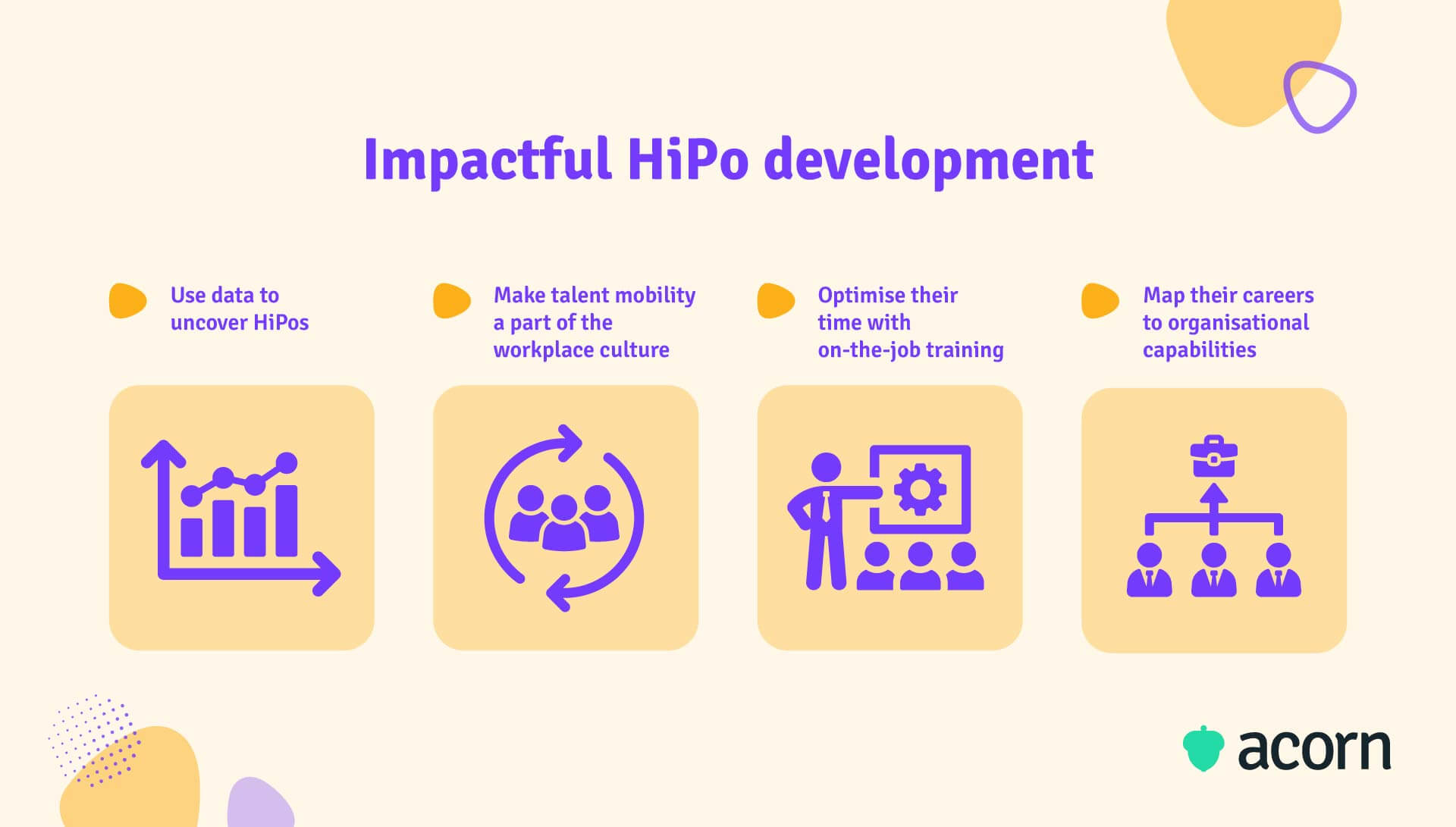
Data-driven identification
While insightful information for nominating HiPos, managers often place a disproportionately high value on people they’ve personally coached. Personal taste isn’t a measure of talent.
You’ve likely got access to a plethora of (objective) people data, from job history and certifications to performance reviews and training history, as well as human capital and learning management tools. A skills register or capability map, as examples, can be used to keep track of potential.
Using this information to identify potential takes the “just like us” bias out of the process. And this takes us back to avoiding attrition and ensuring that all employee hats are thrown into the HiPo ring.
Cultural talent mobility
Bersin highlights a practice by Cisco: Every two years or more, employees are allowed to look for another position internally. Managers are encouraged to help and facilitate transitions.
Talent mobility is beneficial for all involved: It creates trust by allowing HiPo talent to move into roles that interest them, builds new relationships and scatters knowledge through the business in a way that drives innovation and agility. (Why keep all your communications knowledge in one team when it could help sales, design and product?)
On-the-job training
What usually takes someone from individual contributor to leader is strategic know-how. That know-how is usually out of their current level of experience, but best learned on the ground.
Gallup calls it a breakthrough experience, but you may be familiar with the term stretch assignment. You put a HiPo in an unfamiliar environment, whether that’s with new people, subject matter or level of complexity.
Don’t place pressure on them to succeed; failure is a learning opportunity. You also already know what the individual can do. This is a chance for you and the HiPo to see how they handle new challenges and expectations. Other ways you can test HiPo knowledge include:
- Job rotations
- Multi-disciplinary projects
- Simulations and workshops
- Mentoring and coaching.
Map career capabilities
We know HiPos want:
- Career challenges
- Leadership opportunities
- Development and advancement.
Use tools like capability frameworks to inform your HiPo programs. This is a win-win situation: Your organisation gets to design strategic job roles for your high potential employees to grow into.
Self-paced learning tools come in handy here. A learning management system that can map content to your capability framework secures succession planning, without much work, and gives real time feedback on proficiency levels for both learner and learning administrator. Ongoing, 360 feedback helps HiPos understand and own their progression against expectations.
Key takeaways
High potential employees aren’t necessarily cut from a different cloth than your high performers, but they do use that cloth in a different way. Both get the job done well—but while high performers are striving to thrive in their area of expertise, your high potentials are keen to continually outgrow their current level of capabilities.
Be sure to nurture them by:
- Offering job and talent mobility
- Recognising and reward skill
- Providing growth opportunities
- Connecting development to organisational objectives
- Leveling the playing field when identifying high potential.
Remember that your HiPos may not be extremely obvious to you. People can be shy. They may not be effectively supported in their current role or optimally utilised by your organisation. Designing development programs to uncover hidden potential is important for ultimately driving business value and fostering employee engagement, the latter of which keeps critical business knowledge and innovation within your company.
Related Reads on This Topic

How to Encourage Effective and Successful On-the-Job Training
When employees grow, the company grows too. On the job training is a great way to give employees an opportunity to upskill…

What is Succession Planning and Why Is It Important for Business Strategy?
Succession planning can play a major role in ensuring productivity and workforce planning. Find out more about it and why it’s important…

How to Do Capability Mapping Like a Pro
Learn how the capability map can be used to define your current state of business and the gaps to cover for future success…
